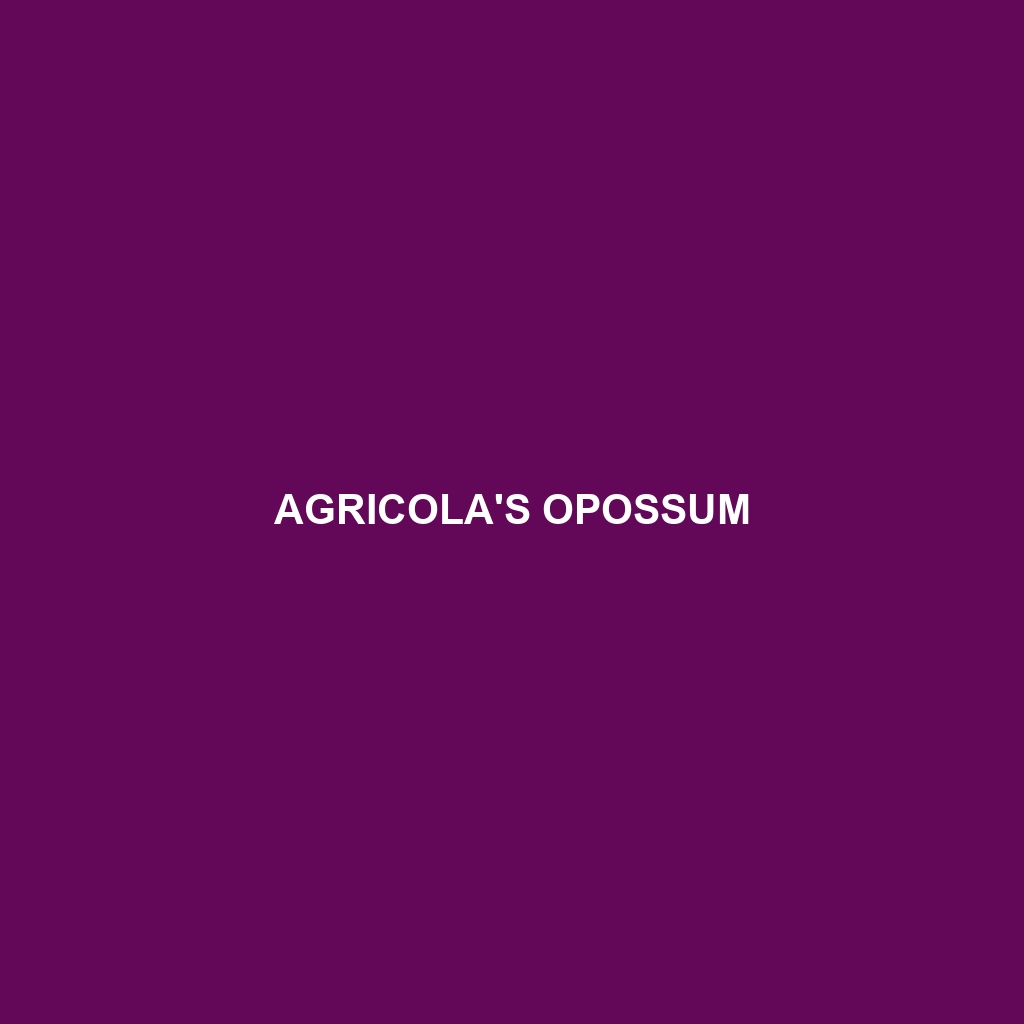Agricola’s Opossum: A Detailed Description
:
Agricola’s Opossum (Thylamys karimii) is a small, nocturnal marsupial native to South America. As a member of the family Didelphidae, this fascinating creature is known for its unique adaptations and survival strategies. Despite its small size, Agricola’s Opossum plays a significant role in its ecosystem, and its intriguing behaviors and physical traits make it a subject of interest for both scientists and wildlife enthusiasts.
Physical Characteristics:
Size: Agricola’s Opossum is a diminutive marsupial, typically ranging from 8 to 12 centimeters in body length, with a tail that can be almost as long as its body, measuring between 7 to 11 centimeters. The average weight of an adult is about 20 to 40 grams.
Coloration: The fur of Agricola’s Opossum is generally soft and dense, with a coloration that varies from grayish-brown to a more reddish hue on the dorsal side. The ventral side is usually lighter, often white or cream-colored. This coloration provides effective camouflage in their natural habitat.
Special Features: One of the most distinctive features of Agricola’s Opossum is its prehensile tail, which is adapted for gripping and can be used to assist in climbing and balance. Additionally, they possess a pointed snout and large, round eyes that aid in their nocturnal lifestyle.
Behaviors:
Social Interactions: Agricola’s Opossum is generally a solitary animal, coming together only for mating purposes. They are known to be territorial and will mark their home ranges with scent markings.
Feeding Habits: These opossums are omnivorous, with a diet that includes insects, small vertebrates, fruits, and other plant materials. Their opportunistic feeding behavior allows them to adapt to varying food availability.
Ecological Roles: As both predator and prey, Agricola’s Opossum plays a crucial role in controlling insect populations and serving as a food source for larger predators. Their foraging activities also aid in seed dispersal and contribute to the overall health of their ecosystem.
Habitats:
Agricola’s Opossum is typically found in a variety of habitats, including dry forests, savannas, and scrublands throughout parts of Bolivia, Brazil, and Paraguay. They are highly adaptable and can thrive in both primary forests and disturbed areas, demonstrating a remarkable ability to cope with changes in their environment.
Adaptations:
Nocturnal Lifestyle: Their large eyes and keen sense of hearing are well-suited for nighttime activity, allowing them to avoid many daytime predators.
Prehensile Tail: This adaptation assists in climbing and navigating through dense vegetation, giving them an advantage in their arboreal and terrestrial movements.
Thermoregulation: Agricola’s Opossum has adapted to a range of temperatures, which is facilitated by their fur and behavioral adaptations such as seeking shelter during extreme weather conditions.
Conservation Status:
The conservation status of Agricola’s Opossum has not been extensively studied, but they are not currently listed as endangered. However, habitat destruction and fragmentation pose potential threats to their populations. Continued research and conservation efforts are essential to ensure their long-term survival.
Fun Facts:
Agricola’s Opossum is named after the Brazilian zoologist Emygdio de Barros Ferreira d’Agricola, who made significant contributions to the study of South American marsupials.
Unlike some other opossum species, Agricola’s Opossum does not have a pouch. Instead, the young cling to the mother’s fur and ride on her back until they are developed enough to fend for themselves.
These opossums have a unique defensive behavior where they can play dead or “play possum” to avoid predation, although this is less common in Agricola’s Opossum compared to other opossum species.
By providing detailed and engaging information about Agricola’s Opossum, your website can help raise awareness and appreciation for this unique and valuable species.
